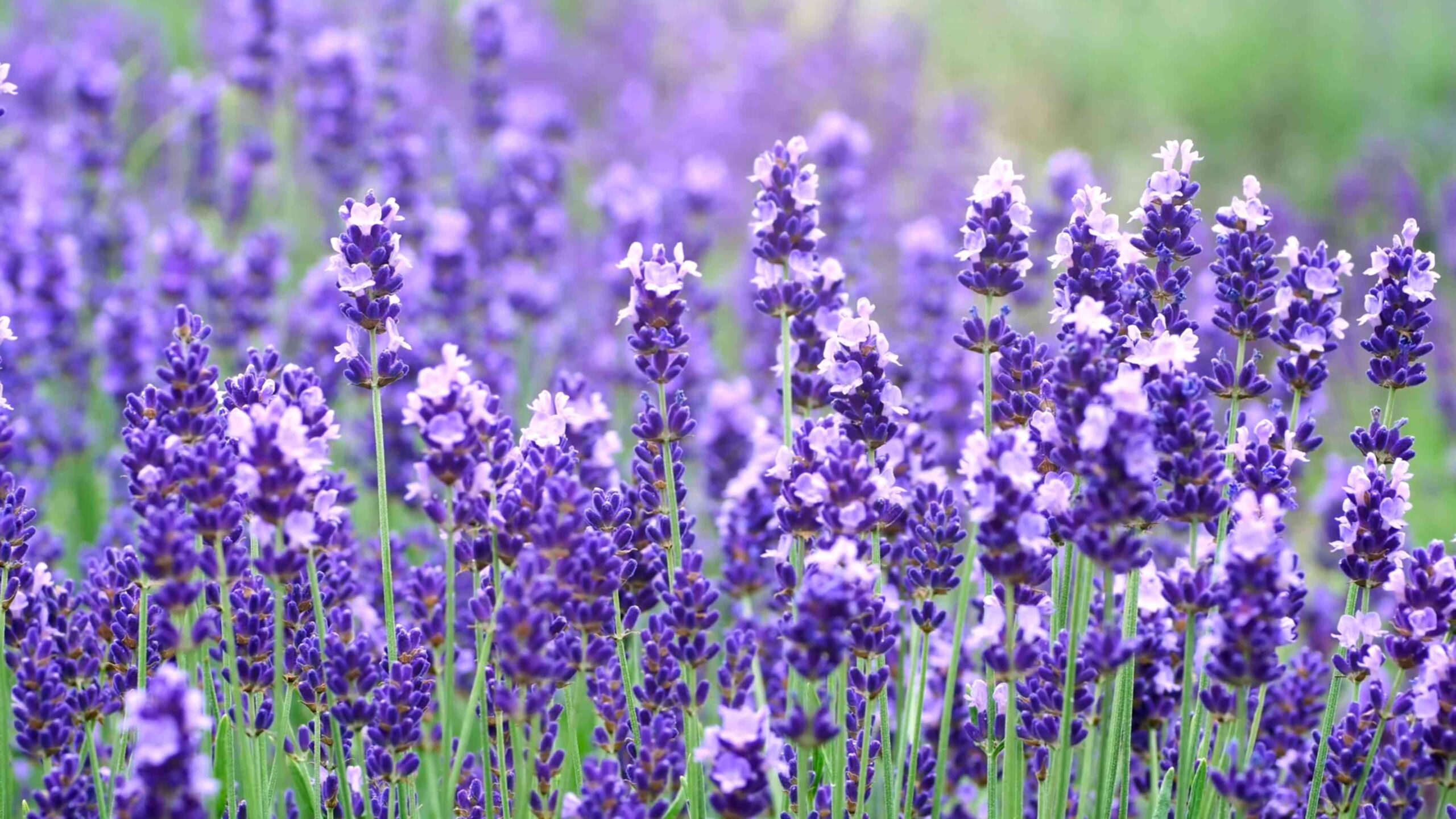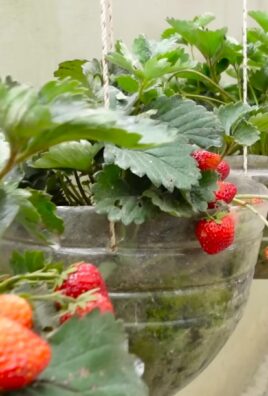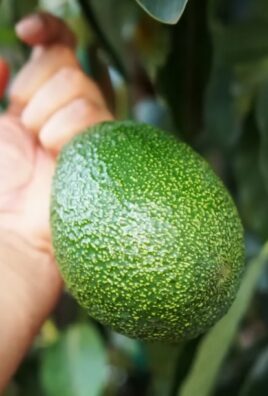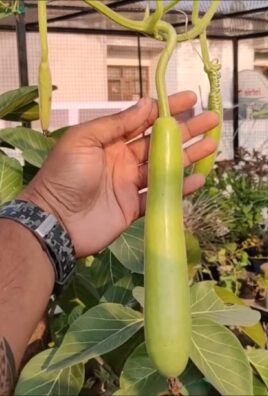Lavender Shrub Care: Ever dreamt of strolling through your own little slice of Provence, inhaling the calming fragrance of lavender without leaving your backyard? I know I have! There’s something incredibly rewarding about nurturing these beautiful, fragrant shrubs, and with the right know-how, you can absolutely transform your garden into a lavender haven.
Lavender has a rich history, dating back to ancient times when it was used for medicinal and aromatic purposes by the Romans and Egyptians. Its association with cleanliness, relaxation, and even romance has made it a beloved plant across cultures for centuries. But let’s be honest, sometimes getting those gorgeous purple blooms can feel a little tricky, right?
That’s where this DIY guide comes in! Many people struggle with lavender shrub care because they don’t realize these Mediterranean natives have specific needs. Overwatering, poor soil drainage, and improper pruning are common culprits behind lackluster growth and a lack of flowers. But don’t worry, I’m here to share some simple yet effective tricks and hacks that will help you unlock the full potential of your lavender shrubs. From understanding the ideal soil conditions to mastering the art of pruning, I’ll guide you through every step so you can enjoy a thriving, fragrant lavender garden for years to come. Let’s get started!

DIY Lavender Shrub Care: A Comprehensive Guide
Hey there, fellow garden enthusiasts! I’m so excited to share my tried-and-true methods for keeping your lavender shrubs happy and thriving. Lavender is such a beautiful and fragrant addition to any garden, but it can be a little finicky if not cared for properly. Don’t worry, though! With a little know-how and some simple steps, you can enjoy a flourishing lavender patch year after year.
Understanding Your Lavender
Before we dive into the nitty-gritty, let’s talk about what lavender *needs* to thrive. Knowing this will make all the difference in your lavender care journey.
* Sunlight: Lavender *loves* sunshine! Aim for at least 6-8 hours of direct sunlight per day. The more sun, the better.
* Soil: Well-draining soil is crucial. Lavender hates having wet feet, so avoid heavy clay soils that retain too much moisture.
* Watering: Lavender is drought-tolerant once established. Overwatering is a common mistake, so err on the side of dryness.
* Pruning: Regular pruning is essential for maintaining a compact shape and promoting abundant blooms.
* Fertilizing: Lavender doesn’t need a lot of fertilizer. In fact, too much fertilizer can actually harm it.
* Air Circulation: Good air circulation helps prevent fungal diseases.
Choosing the Right Lavender Variety
There are many different types of lavender, each with its own unique characteristics. Choosing the right variety for your climate and growing conditions is important. Here are a few popular options:
* English Lavender (Lavandula angustifolia): This is the most common type of lavender and is known for its sweet fragrance and beautiful purple flowers. It’s also relatively cold-hardy.
* French Lavender (Lavandula dentata): French lavender has toothed leaves and a more pungent fragrance than English lavender. It’s less cold-hardy but tolerates warmer climates well.
* Spanish Lavender (Lavandula stoechas): Spanish lavender is easily recognizable by its distinctive “ears” or bracts on top of the flower spikes. It’s less cold-hardy than English lavender and prefers warmer climates.
* Lavandin (Lavandula x intermedia): This is a hybrid of English and spike lavender. It’s known for its large size, abundant blooms, and strong fragrance.
Planting Your Lavender
Okay, let’s get our hands dirty! Planting lavender is relatively straightforward, but here’s a step-by-step guide to ensure success:
1. Choose a Sunny Location: As we discussed, lavender needs plenty of sunshine. Select a spot in your garden that receives at least 6-8 hours of direct sunlight per day.
2. Prepare the Soil: Lavender thrives in well-draining soil. If your soil is heavy clay, amend it with sand, gravel, or perlite to improve drainage. You can also create raised beds or mounds to further enhance drainage.
3. Dig a Hole: Dig a hole that’s twice as wide as the lavender plant’s root ball and just as deep.
4. Gently Remove the Plant from its Container: Carefully remove the lavender plant from its container, being careful not to damage the roots. Gently loosen any circling roots.
5. Plant the Lavender: Place the lavender plant in the hole, ensuring that the top of the root ball is level with the surrounding soil.
6. Backfill the Hole: Backfill the hole with the amended soil, gently firming it around the plant.
7. Water Thoroughly: Water the lavender plant thoroughly after planting.
8. Mulch Lightly: Apply a light layer of mulch around the base of the plant to help retain moisture and suppress weeds. Avoid piling mulch directly against the stem, as this can lead to rot. I like using gravel or small stones as mulch for lavender.
Watering Your Lavender
Watering is a crucial aspect of lavender care, and it’s easy to overdo it. Remember, lavender prefers dry conditions.
1. Water Sparingly: Water your lavender plant only when the soil is dry to the touch.
2. Water Deeply: When you do water, water deeply, allowing the water to soak into the soil.
3. Avoid Overwatering: Overwatering can lead to root rot, which is a common problem with lavender.
4. Consider Your Climate: In hot, dry climates, you may need to water more frequently than in cooler, wetter climates.
5. Use a Moisture Meter: If you’re unsure whether your lavender needs water, use a moisture meter to check the soil moisture level.
Pruning Your Lavender
Pruning is essential for maintaining a compact shape, promoting abundant blooms, and preventing your lavender from becoming woody and leggy.
When to Prune
* After Flowering: The best time to prune lavender is after it has finished flowering, typically in late summer or early fall.
* Spring Pruning (Optional): You can also do a light pruning in the spring to remove any dead or damaged growth.
How to Prune
1. Use Sharp Pruning Shears: Use sharp, clean pruning shears to make clean cuts.
2. Remove Spent Flower Stalks: Cut back the spent flower stalks to just above the foliage.
3. Shape the Plant: Prune the plant to maintain a compact, rounded shape.
4. Avoid Cutting into Old Wood: Avoid cutting back into the old, woody growth, as lavender doesn’t typically regenerate well from old wood. Aim to prune back to where you see green growth.
5. Remove Dead or Damaged Growth: Remove any dead or damaged growth.
6. Don’t Over-Prune: Don’t prune too heavily, as this can weaken the plant. Aim to remove about one-third of the plant’s growth.
Fertilizing Your Lavender
Lavender doesn’t need a lot of fertilizer, and too much fertilizer can actually harm it.
1. Avoid Over-Fertilizing: Avoid over-fertilizing your lavender plant.
2. Use a Low-Nitrogen Fertilizer: If you choose to fertilize, use a low-nitrogen fertilizer.
3. Fertilize Sparingly: Fertilize only once or twice a year, in the spring and early summer.
4. Consider Compost: Instead of using chemical fertilizers, consider using compost to enrich the soil.
Dealing with Pests and Diseases
Lavender is generally pest-resistant, but it can be susceptible to a few problems.
* Root Rot: Root rot is a common problem caused by overwatering. To prevent root rot, ensure that your lavender is planted in well-draining soil and avoid overwatering.
* Fungal Diseases: Fungal diseases can occur in humid conditions. To prevent fungal diseases, ensure that your lavender has good air circulation and avoid overhead watering.
* Aphids: Aphids are small, sap-sucking insects that can infest lavender plants. To control aphids, you can spray them with a strong stream of water or use insecticidal soap.
* Spider Mites: Spider mites are tiny pests that can cause yellowing and stippling of the leaves. To control spider mites, you can spray them with a strong stream of water or use insecticidal soap.
Propagating Lavender
Want more lavender? Propagating lavender is a great way to expand your collection.
1. Take Cuttings: The easiest way to propagate lavender is by taking cuttings.
2. Take Softwood Cuttings: Take softwood cuttings in the spring or early summer.
3. Take Hardwood Cuttings: Take hardwood cuttings in the fall or winter.
4. Prepare the Cuttings: Remove the lower leaves from the cuttings and dip the cut end in rooting hormone.
5. Plant the Cuttings: Plant the cuttings in a well-draining potting mix.
6. Keep the Cuttings Moist: Keep the cuttings moist but not soggy.
7. Rooting: The cuttings should root in a few weeks.
8. Transplant: Once the cuttings have rooted, you can transplant them into individual pots or into the garden.
Harvesting Lavender
Harvesting lavender is a rewarding experience, and the fragrant flowers can be used in a variety of ways.
1. Harvest When Flowers are Partially Open: Harvest lavender when the flowers are partially open.
2. Cut the Stems: Cut the stems just above the foliage.
3. Bundle the Stems: Bundle the stems together with twine or rubber bands.
4. Hang to Dry: Hang the bundles upside down in a cool, dry, well-ventilated place to dry.
5. Drying Time: The lavender should dry in

Conclusion
So, there you have it! Mastering lavender shrub care doesn’t have to be an intimidating task. By understanding its basic needs – ample sunlight, well-draining soil, and careful pruning – you can cultivate a thriving lavender garden that fills your space with its intoxicating fragrance and stunning purple blooms. This isn’t just about growing a plant; it’s about creating an experience, a sensory escape right in your own backyard.
The beauty of lavender lies not only in its visual appeal and aromatic properties but also in its versatility. Consider these variations to elevate your lavender game:
* Experiment with different varieties: Explore the diverse world of lavender, from the compact ‘Hidcote’ to the taller ‘Grosso,’ each offering unique characteristics and bloom times. This allows you to extend the lavender season in your garden and enjoy a wider range of scents and colors.
* Incorporate lavender into your landscape design: Use lavender as a border plant, a focal point in rock gardens, or even as a fragrant ground cover. Its drought tolerance makes it an excellent choice for xeriscaping.
* Harvest and dry your lavender: Preserve the beauty and fragrance of your lavender by harvesting the flower spikes and drying them for use in sachets, potpourri, or even culinary creations. Imagine the satisfaction of using your own homegrown lavender to scent your linens or flavor your baked goods.
* Companion planting: Lavender thrives alongside other Mediterranean herbs like rosemary and thyme. Planting them together creates a harmonious and fragrant garden ecosystem.
Ultimately, successful lavender shrub care is about observation and adaptation. Pay attention to your plant’s needs, adjust your watering and pruning accordingly, and don’t be afraid to experiment. The rewards – a flourishing lavender garden and the countless benefits it provides – are well worth the effort.
We encourage you to embrace this DIY trick and embark on your own lavender-growing journey. Share your experiences, successes, and even your challenges in the comments below. Let’s learn from each other and create a community of lavender enthusiasts! Your insights could be invaluable to other gardeners just starting out. Remember, every garden is unique, and your personal touch will make your lavender garden truly special. So, get your hands dirty, breathe in the calming aroma, and enjoy the process of nurturing these beautiful plants.
Frequently Asked Questions (FAQ)
What is the best time of year to plant lavender?
The best time to plant lavender is typically in the spring or early fall. This allows the plant to establish its roots before the extreme temperatures of summer or winter set in. Spring planting gives the lavender shrub the entire growing season to acclimate, while fall planting allows it to develop a strong root system before the ground freezes. If you live in a region with mild winters, fall planting is often preferred as it gives the plant a head start in the spring. Avoid planting during the hottest part of summer or when the ground is frozen.
How often should I water my lavender plant?
Lavender is drought-tolerant once established, so overwatering is a common mistake. Water deeply but infrequently, allowing the soil to dry out completely between waterings. The frequency will depend on your climate, soil type, and the age of the plant. Newly planted lavender will need more frequent watering until it establishes its root system. As a general rule, water established lavender every 2-4 weeks during the growing season, and even less frequently during the dormant season. Always check the soil moisture before watering; if it feels moist, wait a few more days. Yellowing leaves are often a sign of overwatering.
What kind of soil is best for lavender?
Lavender thrives in well-draining, slightly alkaline soil. Heavy clay soils can retain too much moisture and lead to root rot. If you have clay soil, amend it with plenty of organic matter, such as compost or well-rotted manure, to improve drainage. You can also add sand or gravel to further enhance drainage. A soil pH of 6.5 to 8.0 is ideal for lavender. You can test your soil pH with a home testing kit and amend it with lime if it’s too acidic.
How much sunlight does lavender need?
Lavender needs at least 6-8 hours of direct sunlight per day to thrive. Insufficient sunlight can lead to leggy growth, fewer blooms, and a weaker fragrance. Choose a planting location that receives full sun throughout the day. If you live in a particularly hot climate, some afternoon shade may be beneficial, but avoid planting lavender in a completely shaded area.
When and how should I prune my lavender?
Pruning is essential for maintaining the shape and health of your lavender plant. The best time to prune lavender is after the first flush of blooms in late summer or early fall. Avoid pruning too late in the fall, as this can stimulate new growth that may be damaged by frost. When pruning, remove about one-third of the plant’s growth, cutting just above a leaf node. Avoid cutting into the old wood, as lavender doesn’t typically regenerate from old wood. Regular pruning encourages bushier growth and more abundant blooms.
Why is my lavender plant not blooming?
There are several reasons why your lavender plant may not be blooming. The most common causes include insufficient sunlight, overwatering, poor soil drainage, and improper pruning. Make sure your lavender is receiving at least 6-8 hours of direct sunlight per day, and that the soil is well-draining. Avoid overwatering, and prune your lavender after the first flush of blooms to encourage new growth and more flowers. Also, ensure that your lavender plant is mature enough to bloom; it may take a year or two for a newly planted lavender to start flowering.
Can I grow lavender in a container?
Yes, lavender can be successfully grown in containers. Choose a pot that is at least 12 inches in diameter and has drainage holes. Use a well-draining potting mix specifically formulated for containers. Water regularly, allowing the soil to dry out between waterings. Fertilize sparingly with a balanced fertilizer. Container-grown lavender may need to be protected from extreme cold during the winter months.
Is lavender deer resistant?
Yes, lavender is generally considered to be deer resistant. The strong fragrance of lavender deters deer from browsing on the plant. However, in areas with high deer populations or limited food sources, deer may still occasionally nibble on lavender.
How do I harvest and dry lavender?
Harvest lavender when the flower buds are just beginning to open. Cut the flower stems in the morning, after the dew has dried. Bundle the stems together with twine and hang them upside down in a cool, dark, and well-ventilated place to dry. It typically takes 1-3 weeks for lavender to dry completely. Once dry, you can remove the flower buds from the stems and store them in an airtight container.
What are some common pests and diseases that affect lavender?
Lavender is generally a hardy plant, but it can be susceptible to certain pests and diseases. Common pests include aphids, spider mites, and whiteflies. These pests can be controlled with insecticidal soap or neem oil. Root rot is a common disease that affects lavender, particularly in poorly drained soils. To prevent root rot, ensure that your lavender is planted in well-draining soil and avoid overwatering. Fungal diseases, such as Septoria leaf spot, can also affect lavender. These diseases can be treated with a fungicide.





Leave a Comment